
Five easy exercises to avoid knee pain and strengthen ageing joints – a video guide
It’s never too early to look after your knees, so we’ve found a fitness trainer to guide you through some quick and simple motions to make sure you keep that spring in your step
Knee pain afflicts many of us for many reasons: poor posture, lack of movement resulting in weak surrounding muscles, or more serious complaints such as osteoarthritis.
Even if you just suffer from general knee stiffness, take it seriously. Because we live so much longer now, many endure limited movement due to weak musculature and, later in life, require knee replacement surgery.
There are, however, preventive measures to strengthen the knee area, ensuring it stays stay strong and healthy for as long as possible. Although genetics play a role in how we age, there is no question that we can help preserve our physical capacity with regular movement to lubricate joints; resistance training to increase muscle tone; and working with proper alignment to reduce joint strain and torque. It’s never too early to look after your knees, even in the smallest way.
Here are five easy daily exercises to help put a spring in your step. The key is to ensure a neutral spine throughout (no arching of the back; core is engaged) and to focus on the muscles around the knees as you move. Apart from knee rolls, repeat each one 10 times on each side.
1. Squats (in parallel, medial and lateral position)
Squats are great because they not only strengthen legs and knees, but also the abdominals, back and glutes. They also mimic movements we naturally perform in daily life, helping avoid injury.
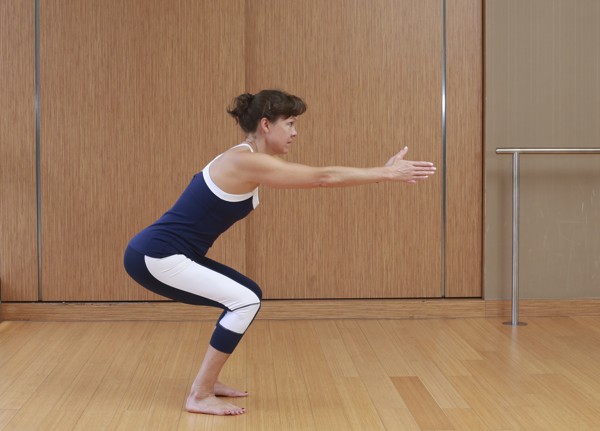
Parallel – stand with feet facing forward and slightly wider than hip-width apart. Find a spot at eye level and focus on it during the exercise. Do not look at the floor. Keep your back, chest and shoulders straight and core engaged. As you squat down, focus on keeping your knees pointing straight ahead in line with the feet, backside lengthening down (do not arch your back). Keep arms straight out in front, parallel to the ground, or hands on your hips. Your body weight should be equally on your heels and the balls of your feet (see if you can flex your toes up off the floor; don’t grip).
Relief offered to Hong Kong osteoarthritis patients at Tai Po hospital after new knee replacement centre opens
Try to squat down until your hip joint is lower than your knees and your backside is sticking back, as though you’re about to sit on a chair. Inhale and raise to standing the same way you came down. Repeat.
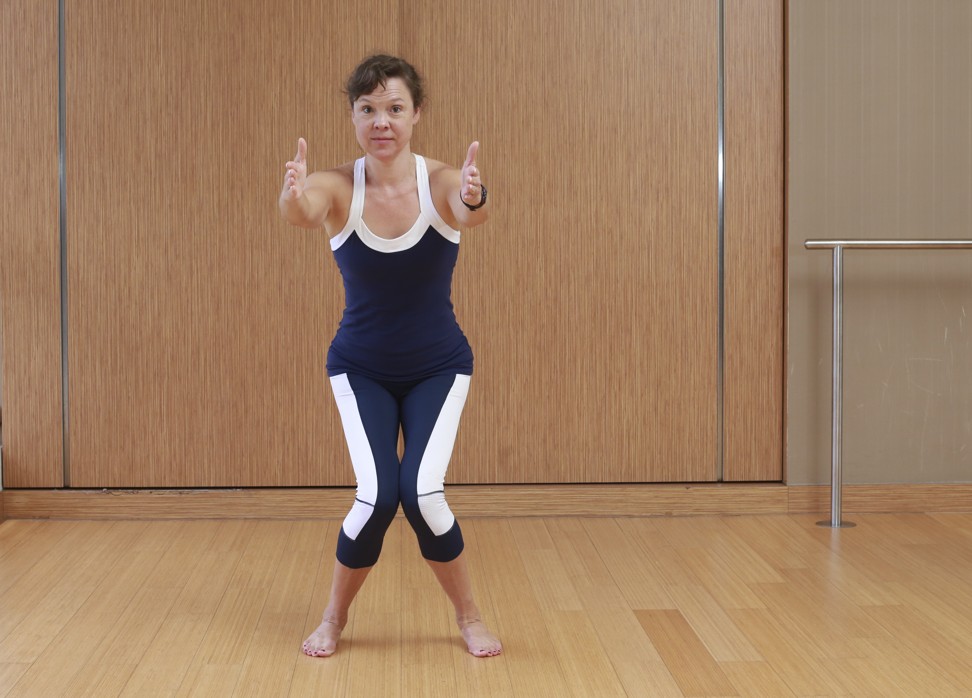
Medial – stand with feet hip-width apart with toes pointing towards one another (“pigeon toed”) and squat down in the same way as explained above. This isolates different muscles in the quads which protect and help strengthen the knees.
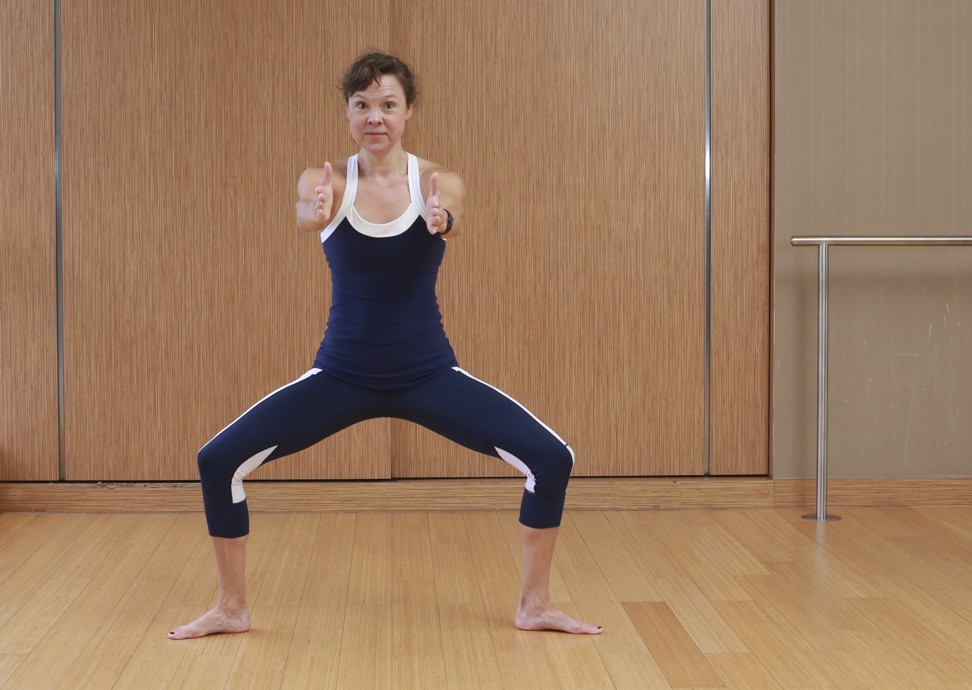
Lateral – stand with feet slightly wider than hip-width apart and point toes away from each other (ballerinas call this “second position”), then squat down. Doing it this way engages the inner thighs and knees in a different way.
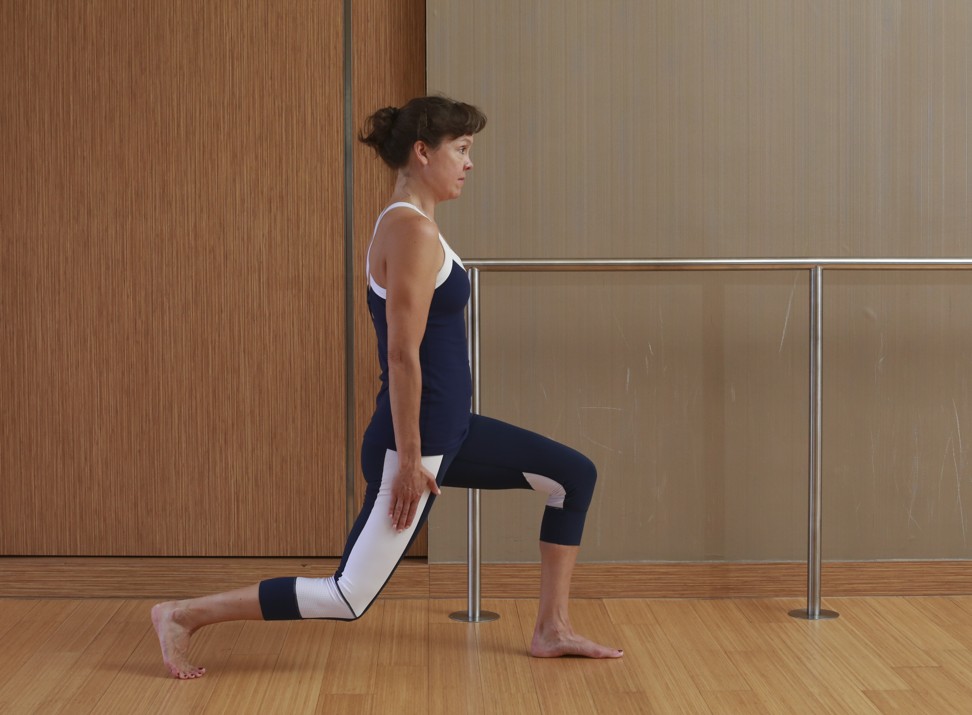
2. Backwards lunges
Stand with feet hip-width apart, engage your core and keep your back straight. Place hands on hips and inhale. Exhale and stride one leg back, toes pointing ahead and keeping hips aligned (backward lunges really help to improve balance).
Hyaluronic acid injections making life easier for Hong Kong knee-joint patients
Bend both knees until hips are slightly lower than the knee. Raise to standing the same way. Do not arch your back (try to slightly tuck in the tailbone), keep your gaze up and ensure your core is engaged throughout. Repeat on the other side. You should start slowly on this, going only as low as you feel comfortable before building up to a lunge where your back knee is very close to the ground.
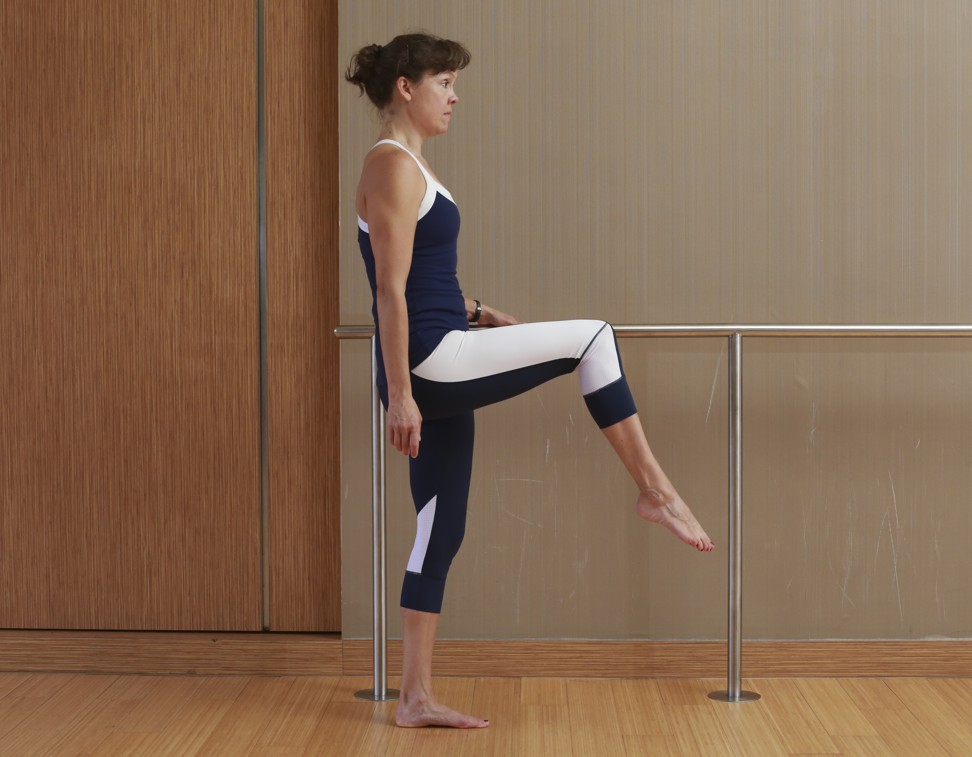
3. Standing knee lifts with extensions (either standing with back against wall, or lying on floor)
Everyone from new mothers to serious athletes use these for a reason. Standing up against a wall or lying on the floor, keep the arms by your side or on hips. Lift leg up and bend knee so that it’s in a “sitting in a chair” position – or what in Pilates we call “table top”, 90 degrees at the hip and knee joints. Extend the leg forward and bend back to that same table top position 10 times. If lying on the floor, do the same bend and extend.
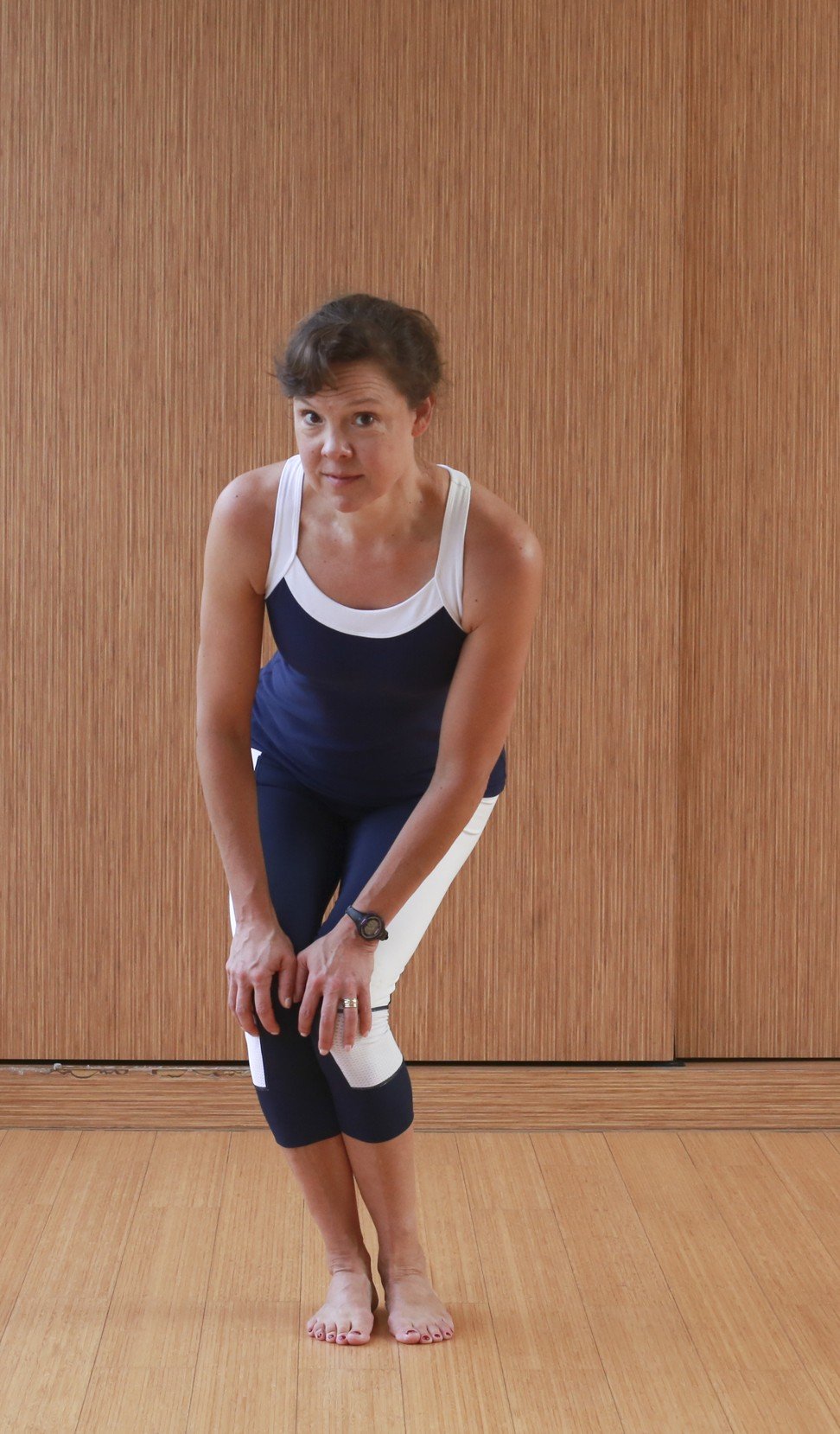
4. Knee rolls
Stand with feet together. Bend over and place one hand on each kneecap and circle both knees together around in a circle to the right five times and to the left five times. This helps not only the knees, but also the hips and ankles, and works vital balance muscles surrounding all the joints to maintain stability.
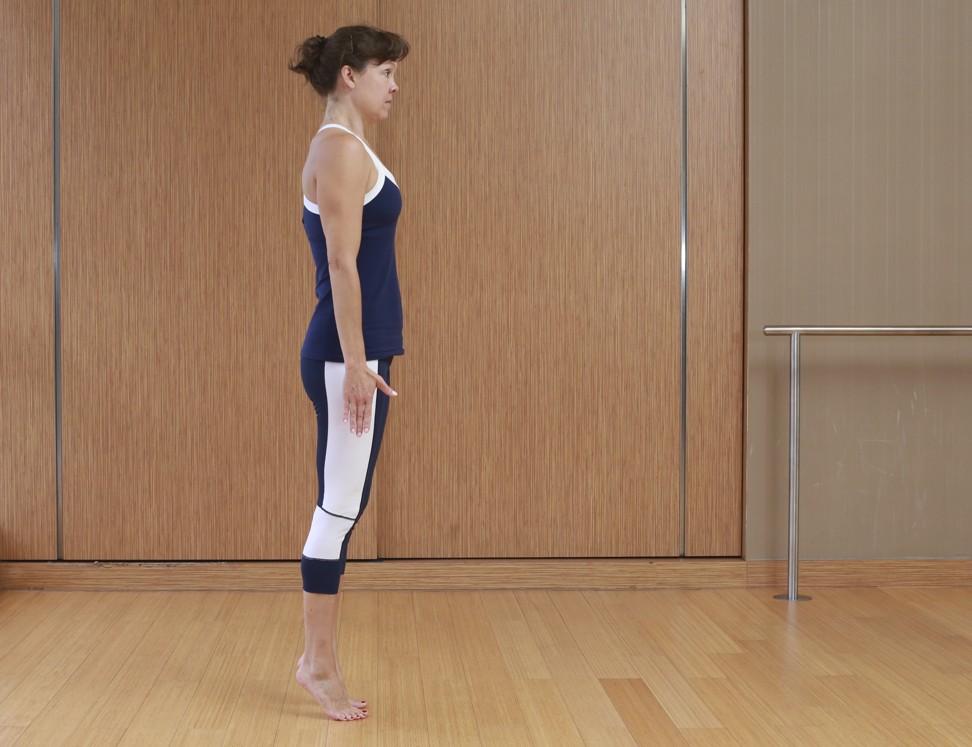
5. Standing calf raises
This is the perfect quick-fix exercise to do when queuing for your morning coffee. With feet hip-width apart, engage core and keep spine in neutral position. Inhale and as you exhale, raise both heels from the ground, keeping the tops of the toes firmly pressed into the ground. Hold to a slow count of five and lower as slowly as you came up. Control here is key. As this is a knee exercise, keep your focus on engaging the knee muscles, “lifting” them as you move up and down.
Now enjoy that coffee.
Diet and lifestyle changes key to protecting women against osteoporosis
The exercises in this photographic sequence were performed by Flex trainer Megan Farrugia

